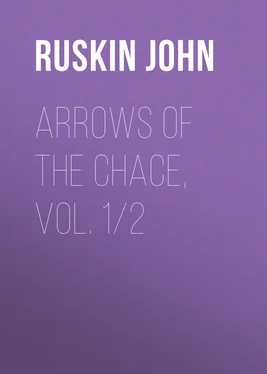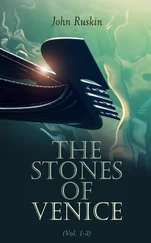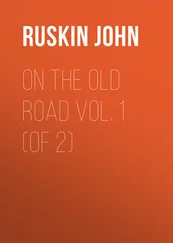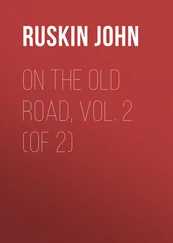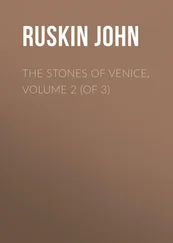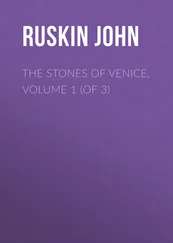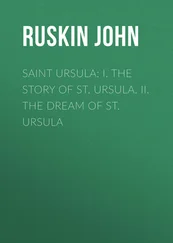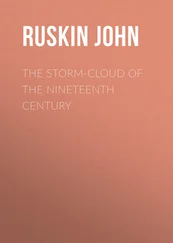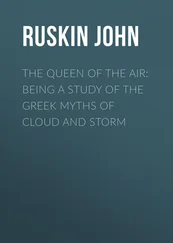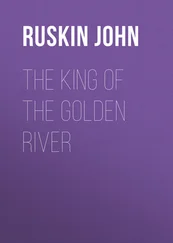John Ruskin - Arrows of the Chace, vol. 1/2
Здесь есть возможность читать онлайн «John Ruskin - Arrows of the Chace, vol. 1/2» — ознакомительный отрывок электронной книги совершенно бесплатно, а после прочтения отрывка купить полную версию. В некоторых случаях можно слушать аудио, скачать через торрент в формате fb2 и присутствует краткое содержание. Жанр: Биографии и Мемуары, literature_19, foreign_antique, на английском языке. Описание произведения, (предисловие) а так же отзывы посетителей доступны на портале библиотеки ЛибКат.
- Название:Arrows of the Chace, vol. 1/2
- Автор:
- Жанр:
- Год:неизвестен
- ISBN:нет данных
- Рейтинг книги:5 / 5. Голосов: 1
-
Избранное:Добавить в избранное
- Отзывы:
-
Ваша оценка:
- 100
- 1
- 2
- 3
- 4
- 5
Arrows of the Chace, vol. 1/2: краткое содержание, описание и аннотация
Предлагаем к чтению аннотацию, описание, краткое содержание или предисловие (зависит от того, что написал сам автор книги «Arrows of the Chace, vol. 1/2»). Если вы не нашли необходимую информацию о книге — напишите в комментариях, мы постараемся отыскать её.
Arrows of the Chace, vol. 1/2 — читать онлайн ознакомительный отрывок
Ниже представлен текст книги, разбитый по страницам. Система сохранения места последней прочитанной страницы, позволяет с удобством читать онлайн бесплатно книгу «Arrows of the Chace, vol. 1/2», без необходимости каждый раз заново искать на чём Вы остановились. Поставьте закладку, и сможете в любой момент перейти на страницу, на которой закончили чтение.
Интервал:
Закладка:
Again, with respect to the question of focal distances, 7 7 See “Modern Painters,” vol. i. p. 184 (Pt. II. § ii., cap. 4, § 6). “Turner introduced a new era in landscape art, by showing that the foreground might be sunk for the distance, and that it was possible to express immediate proximity to the spectator, without giving anything like completeness to the forms of the near objects. This, observe, is not done by slurred or soft lines (always the sign of vice in art), but by a decisive imperfection, a firm but partial assertion of form, which the eye feels indeed to be close home to it, and yet cannot rest upon, nor cling to, nor entirely understand, and from which it is driven away of necessity to those parts of distance on which it is intended to repose.” To this the critic of the Chronicle had objected, attempting to show that it would result in Nature being “represented with just half the quantity of light and color that she possesses.”
your critic, in common with many very clever people to whom I have spoken on the subject, has confused the obscurity of objects which are laterally out of the focal range , with that of objects which are directly out of the focal distance . If all objects in a landscape were in the same plane, they should be represented on the plane of the canvas with equal distinctness, because the eye has no greater lateral range on the canvas than in the landscape, and can only command a point in each. But this point in the landscape may present an intersection of lines belonging to different distances—as when a branch of a tree, or tuft of grass, cuts against the horizon: and yet these different distances cannot be discerned together: we lose one if we look at the other, so that no painful intersection of lines is ever felt. But on the canvas, as the lines of foreground and of distance are on the same plane, they will be seen together whenever they intersect, painfully and distinctly; and, therefore, unless we make one series, whether near or distant, obscure and indefinite, we shall always represent as visible at once that which the eye can only perceive by two separate acts of seeing. Hold up your finger before this page, six inches from it. If you look at the edge of your finger, you cannot see the letters; if you look at the letters, you cannot see the edge of your finger, but as a confused, double, misty line. Hence in painting, you must either take for your subject the finger or the letters; you cannot paint both distinctly without violation of truth. It is of no consequence how quick the change of the eye may be; it is not one whit quicker than its change from one part of the horizon to another, nor are the two intersecting distances more visible at the same time than two opposite portions of a landscape to which it passes in succession. Whenever, therefore, in a landscape, we look from the foreground to the distance, the foreground is subjected to two degrees of indistinctness: the first, that of an object laterally out of the focus of the eye; and the second , that of an object directly out of the focus of the eye; being too near to be seen with the focus adapted to the distance. In the picture, when we look from the foreground to the distance, the foreground is subjected only to one degree of indistinctness, that of being out of the lateral range; for as both the painting of the distance and of the foreground are on the same plane, they are seen together with the same focus. Hence we must supply the second degree of indistinctness by slurring with the brush, or we shall have a severe and painful intersection of near and distant lines, impossible in nature. Finally, a very false principle is implied by part of what is advanced by your critic—which has led to infinite error in art, and should therefore be instantly combated whenever it were hinted—that the ideal is different from the true. It is, on the contrary, only the perfection of truth. The Apollo is not a false representation of man, but the most perfect representation of all that is constant and essential in man—free from the accidents and evils which corrupt the truth of his nature. 8 8 The passage in the Chronicle ran thus: “The Apollo is but an ideal of the human form; no figure ever moulded of flesh and blood was like it.” With the objection to this criticism we may compare “Modern Painters” (vol. i. p. 27), where the ideal is defined as “the utmost degree of beauty of which the species is capable.” See also vol. ii. p. 99: “The perfect idea of the form and condition in which all the properties of the species are fully developed is called the Ideal of the species;” and “That unfortunate distinctness between Idealism and Realism which leads most people to imagine that the Ideal is opposed to the Real, and therefore false.”
Supposing we are describing to a naturalist some animal he does not know, and we tell him we saw one with a hump on its back, and another with strange bends in its legs, and another with a long tail, and another with no tail, he will ask us directly, But what is its true form, what is its real form? This truth, this reality, which he requires of us, is the ideal form, that which is hinted at by all the individuals—aimed at, but not arrived at. But never let it be said that, when a painter is defying the principles of nature at every roll of his brush, as I have shown that Gaspar does, when, instead of working out the essential characters of specific form, and raising those to their highest degree of nobility and beauty, he is casting all character aside, and carrying out imperfection and accident; never let it be said, in excuse for such degradation of nature, that it is done in pursuit of the ideal. As well might this be said in defence of the promising sketch of the human form pasted on the wainscot behind the hope of the family—artist and musician of equal power—in the “Blind Fiddler.” 9 9 This picture of Sir David Wilkie’s was presented to the National Gallery (No. 99) by Sir George Beaumont, in 1826.
Ideal beauty is the generalization of consummate knowledge, the concentration of perfect truth—not the abortive vision of ignorance in its study. Nor was there ever yet one conception of the human mind beautiful, but as it was based on truth. Whenever we leave nature, we fall immeasurably beneath her. So, again, I find fault with the “ropy wreath” of Gaspar, 10 10 The bank of cloud in the “Sacrifice of Isaac” is spoken of in “Modern Painters” (vol. i. p. 227, Pt. II., § iii., cap. 3, §7), as “a ropy, tough-looking wreath.” On this the reviewer commented.
not because he chose massy cloud instead of light cloud; but because he has drawn his massy cloud falsely , making it look tough and powerless, like a chain of Bologna sausages, instead of gifting it with the frangible and elastic vastness of nature’s mountain vapor.
Finally, Sir, why must it be only “when he is gone from us” 11 11 “We agree,” wrote the Chronicle , “with the writer in almost every word he says about this great artist; and we have no doubt that, when he is gone from among us, his memory will receive the honor due to his living genius.” See also the postscript to the first volume of “Modern Painters” (pp. 422-3), written in June, 1851.
that the power of our greatest English landscape painter is to be acknowledged? It cannot, indeed, be fully understood until the current of years has swept away the minor lights which stand around it, and left it burning alone; but at least the scoff and the sneer might be lashed into silence, if those only did their duty by whom it is already perceived. And let us not think that our unworthiness has no effect on the work of the master. I could be patient if I thought that no effect was wrought on his noble mind by the cry of the populace; but, scorn it as he may, and does, it is yet impossible for any human mind to hold on its course, with the same energy and life, through the oppression of a perpetual hissing, as when it is cheered on by the quick sympathy of its fellow-men. It is not in art as in matters of political duty, where the path is clear and the end visible. The springs of feeling may be oppressed or sealed by the want of an answer in other bosoms, though the sense of principle cannot be blunted except by the individual’s own error; and though the knowledge of what is right, and the love of what is beautiful, may still support our great painter through the languor of age—and Heaven grant it may for years to come—yet we cannot hope that he will ever cast his spirit upon the canvas with the same freedom and fire as if he felt that the voice of its inspiration was waited for among men, and dwelt upon with devotion. Once, in ruder times, the work of a great painter 12 12 Cimabue. The quarter of the town is yet named, from the rejoicing of that day, Borgo Allegri. [The picture thus honored was that of the Virgin, painted for the Church of Santa Maria Novella, where it now hangs in the Rucellai Chapel. “This work was an object of so much admiration to the people, … that it was carried in solemn procession, with the sound of trumpets and other festal demonstrations, from the house of Cimabue to the church, he himself being highly rewarded and honored for it. It is further reported, and may be read in certain records of old painters, that whilst Cimabue was painting this picture in a garden near the gate of San Pietro, King Charles the Elder, of Anjou, passed through Florence, and the authorities of the city, among other marks of respect, conducted him to see the picture of Cimabue. When this work was shown to the king, it had not before been seen by any one; wherefore all the men and women of Florence hastened in great crowds to admire it, making all possible demonstrations of delight. The inhabitants of the neighborhood, rejoicing in this occurrence, ever afterwards called that place Borgo Allegri; and this name it has since retained, although in process of time it became enclosed within the walls of the city.—Vasari, “Lives of Painters.” Bohn’s edition. London, 1850. Vol. i. p. 41. This well-known anecdote may also be found in Jameson’s “Early Italian Painters,” p. 12]. ( Original note to the letter: see editor’s preface. )
was waited for through days at his door, and attended to its place of deposition by the enthusiasm of a hundred cities; and painting rose from that time, a rainbow upon the Seven Hills, and on the cypressed heights of Fiésole, guiding them and lighting them forever, even in the stillness of their decay. How can we hope that England will ever win for herself such a crown, while the works of her highest intellects are set for the pointing of the finger and the sarcasm of the tongue, and the sole reward for the deep, earnest, holy labor of a devoted life, is the weight of stone upon the trampled grave, where the vain and idle crowd will come to wonder how the brushes are mimicked in the marble above the dust of him who wielded them in vain?
Интервал:
Закладка:
Похожие книги на «Arrows of the Chace, vol. 1/2»
Представляем Вашему вниманию похожие книги на «Arrows of the Chace, vol. 1/2» списком для выбора. Мы отобрали схожую по названию и смыслу литературу в надежде предоставить читателям больше вариантов отыскать новые, интересные, ещё непрочитанные произведения.
Обсуждение, отзывы о книге «Arrows of the Chace, vol. 1/2» и просто собственные мнения читателей. Оставьте ваши комментарии, напишите, что Вы думаете о произведении, его смысле или главных героях. Укажите что конкретно понравилось, а что нет, и почему Вы так считаете.
